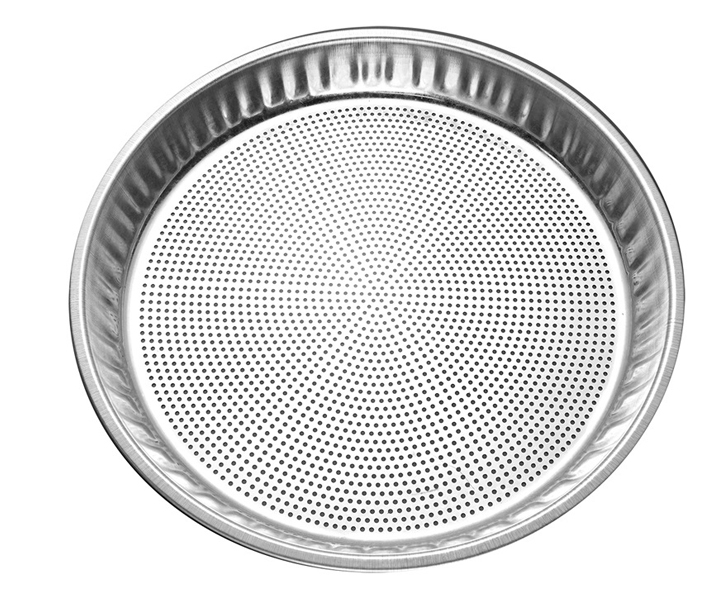
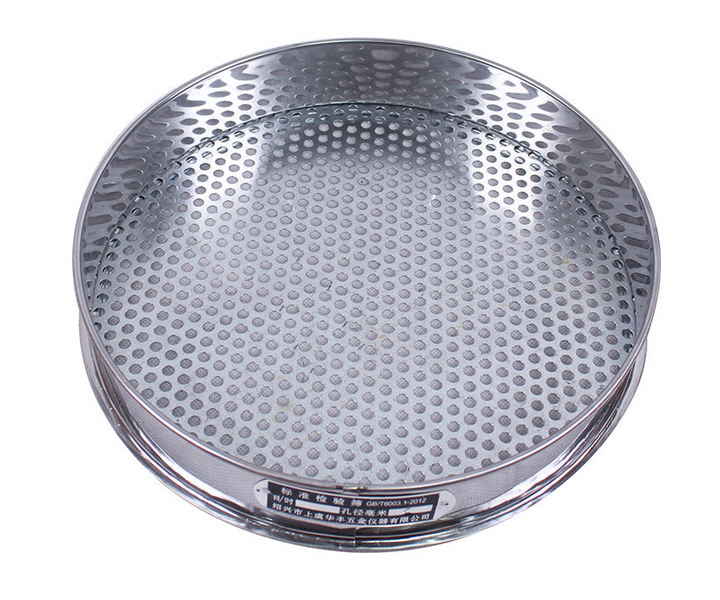

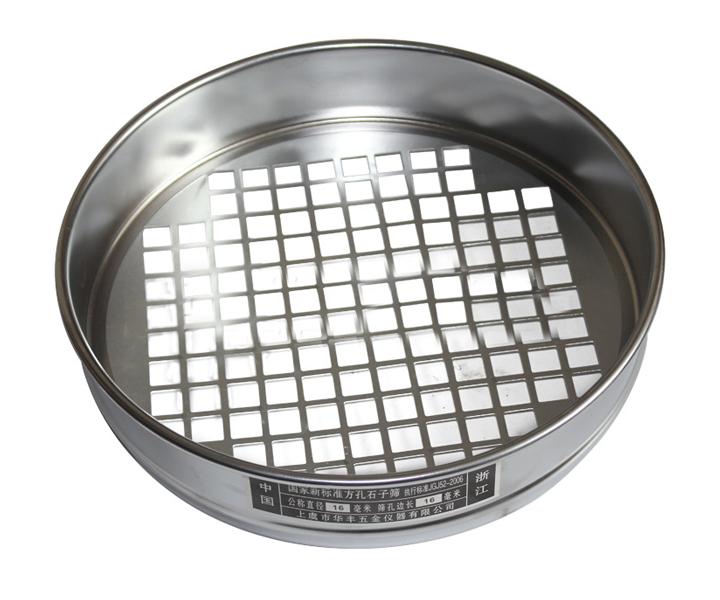
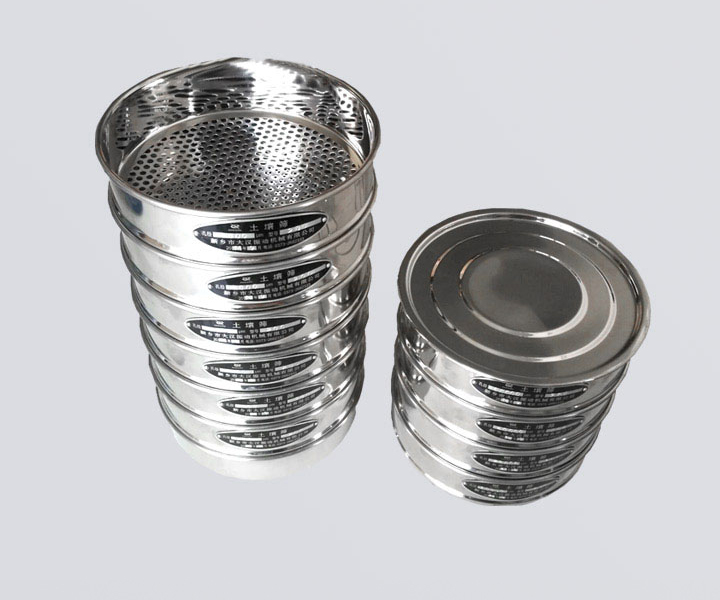





Is a common laboratory test used to determine the particle size distribution in soil samples.
![]()
![]()
![]()
Price:$20.00 - $200.00/Set
Consult now and enjoy a 10% discount
Sieve diameter: 75mm, 100mm, 200mm, 300mm
Aperture: 0.075mm-60mm (0.075mm-1mm is stainless steel screen, 2mm above is galvanized punching plate)
Number of pieces: 11 sieves plus a set of bottom covers (12 in total), respectively: 0.075mm, 0.1mm, 0.25mm, 0.5mm, 1mm, 2mm, 5mm, 10mm, 20mm, 40mm, 60mm
Hole shape: square hole, round hole, diamond hole
Material: brass, stainless steel, galvanized, etc.
Weight: 5kg
Application: soil nitrogen content determination, soil potassium content determination, soil carbonate determination soil sieving for various experiments.

Soil sieve test, also known as the grain size analysis or particle size distribution test, is a common laboratory test conducted to determine the distribution of particle sizes in a soil sample. It provides valuable information about the soil's engineering properties, such as permeability, compaction characteristics, and classification.
Due to the high water content in the soil, in order to prevent rust, the screen frame and screen mesh are made of 304 stainless steel. Standard soil sieves have diameters of 75mm, 200mm, and 300mm, and sieve hole sizes of 0.075, 0.1, 0.125, 0.25, 0.5, 0.63, 1, 2, 5, and 10mm.
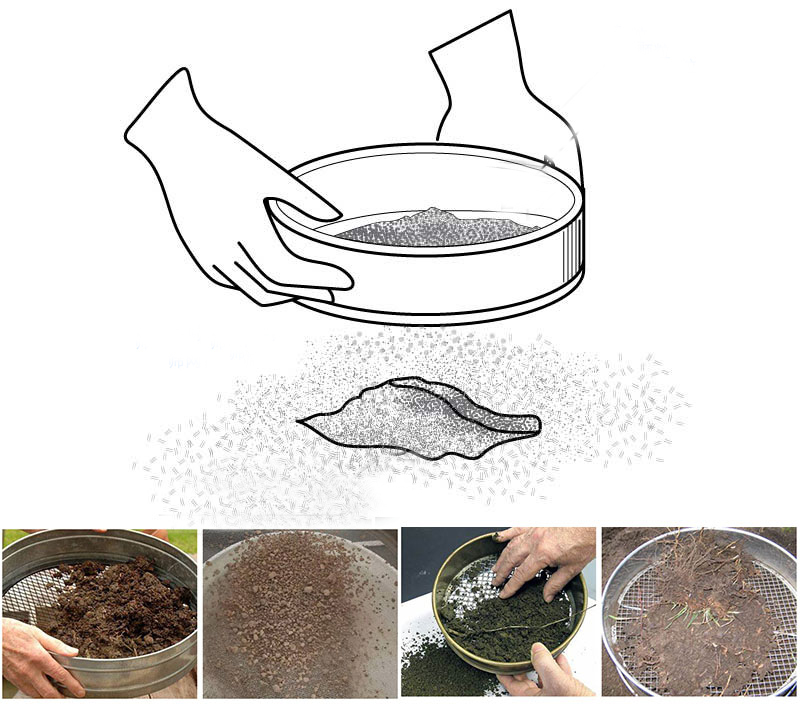
Soil sieve test or particle size analysis is used to determine the particle size distribution of a soil sample. This test provides valuable information about the proportion of different sized particles in the soil. Here are some common uses and applications of soil sieving tests:
1. Soil Classification: The particle size distribution obtained by sieving tests is used to classify soils into various categories according to recognized classification systems.
2. Engineering characteristics: particle size distribution is a basic characteristic that affects various engineering characteristics of soil. Sieve test results help evaluate properties such as permeability, compaction performance, shear strength, settlement and drainage characteristics. These properties are critical for designing foundations, embankments, slopes, and other geotechnical structures.
3. Soil Behavior Analysis: Understanding the particle size distribution enables engineers and geotechnical professionals to gain insight into how soil behaves under different loads or environmental conditions. For example, the proportion of fine particles (silt and clay) affects the plasticity, shrinkage and swelling behavior of the soil.
4. Soil Suitability Assessment: Screening tests help to assess the suitability of soils for various applications. In construction projects, for example, the particle size distribution can determine whether a soil is suitable for use as a fill material, a road foundation, or an ingredient in concrete or asphalt mixtures.
5. Soil erosion potential: Soil sieving test results can provide insight into the erosion potential of soil. Soils with a high proportion of fine particles are more susceptible to wind or water erosion.
6. Research and data analysis: Particle size distribution data obtained from sieve tests can contribute to research, database development, and statistical analysis related to soil properties and behavior.

| Specification | Sieve hole (mm) |
Specification | Sieve hole (mm) |
| Square hole | 0.074 | Iron plate round hole | 5 |
| Square hole copper mesh | 0.25 | 10 | |
| Square hole copper mesh | 0.5 | 20 | |
| Square hole copper mesh | 1 | 40 | |
| Iron plate round hole | 2 | 60 | |
| Non-porous sieve | Receiving tray |
Particle size determination
Soil sieving tests provide a quantitative analysis of the particle size distribution of a soil sample. It helps determine the proportion of particles of different sizes present in the soil, from coarse gravel to fine clay. This information is critical to understanding soil behavior, permeability, compaction and other engineering properties.
Standardized procedure
Soil sieving tests follow standardized procedures and guidelines, ensuring consistency and comparability of results from different testing laboratories. This enables reliable data interpretation and facilitates effective communication between researchers, engineers and geotechnical professionals.
Cost-effectiveness
Performing a soil sieving test is relatively inexpensive compared to other soil characterization laboratory tests. The required equipment, such as sieves and sieve shakers, are often affordable and durable, making testing accessible to a wide range of users.
Non-destructive
Soil sieving testing is a non-destructive method in which the retained portion of soil is collected and used for further testing or analysis. This enables additional laboratory testing, such as hydrometer analysis or sedimentation testing, for specific particle size ranges of interest.
Field and Lab Flexibility
Soil sieving tests can be performed in both field and laboratory settings, depending on project requirements and sample availability. Portable sieve packs are available for field testing for on-site particle size analysis and immediate decision making.
Quick results
Soil sieving tests often provide relatively quick results, allowing quick assessment and decision-making during construction projects or soil surveys. This efficiency makes it valuable in time-sensitive situations where timely analysis is required.
Here is a step-by-step overview of the sieve test procedure
1、Sample collection: Collect a representative soil sample from the desired location using appropriate sampling techniques.
2、Sample preparation: Air-dry the soil sample and remove any large aggregates or organic matter. Break down larger clumps gently using a mortar and pestle. Thoroughly mix the soil to ensure a homogeneous sample.
3、Sieve set selection: Choose an appropriate set of sieves based on the expected particle size range of the soil. The sieves are typically stacked with the finest sieve at the bottom and coarser sieves placed above in ascending order.
4、Sieving process: Weigh an empty clean pan or container and record its mass. Place the soil sample on the top sieve and cover it with the lid. Start the sieve shaker or manually agitate the sieves to facilitate particle separation. Continue the sieving process until no further particles pass through the sieves.
5、Weighing the fractions: Carefully remove each sieve from the stack and collect the soil retained on each sieve. Weigh the soil retained on each sieve and record its mass. Additionally, weigh the soil retained on the pan or container below the finest sieve.
6、Calculations: Calculate the percentage of soil retained on each sieve by dividing the mass of the soil retained by the initial mass of the soil sample and multiplying by 100. Determine the cumulative percentage passing for each sieve by subtracting the percentage retained from 100 and accumulating the values from the finest sieve to the coarsest.
7、Particle size distribution curve: Plot a particle size distribution curve using the particle sizes (sieve openings) on the x-axis and the cumulative percentage passing on the y-axis. This curve provides a visual representation of the soil's particle size distribution.

1. From the air-dried loose soil sample, use the quarter method to obtain soil. The quantity of soil borrowed shall be executed according to the figure below the table;
2. Pass the sample through a 2mm sieve, and weigh the mass of the soil on the sieve and under the sieve. Take the soil on the 2mm sieve and pour it into the upper sieve of the coarse sieve, and pour the soil under the 2mm sieve into the upper sieve of the fine sieve (the analysis sieve is stacked from top to bottom) . Use a sieve shaker to fully sieve and analyze until the diameter of the soil particles on each sieve is larger than the sieve hole diameter, generally shake the sieve for 15 to 30 minutes;
3. Starting from the large-aperture sieve, remove each sieve in sequence, and weigh the soil left on each sieve to the nearest 0.1g. The difference between the sum of the soil mass on each sieve and the total soil mass shall not be greater than 1% of the total soil mass;
4. Calculate the particle group content and cumulative content, draw a gradation curve, obtain each characteristic particle size, analyze the gradation of the soil, and name it according to the specifications.
| Soil particle size (mm) |
<2mm | <10mm | <20mm | <40mm | >40mm |
| Sampling mass (g) |
100-300g | 300-900g | 1000-2000g | 2000-4000g | Above 4000g |
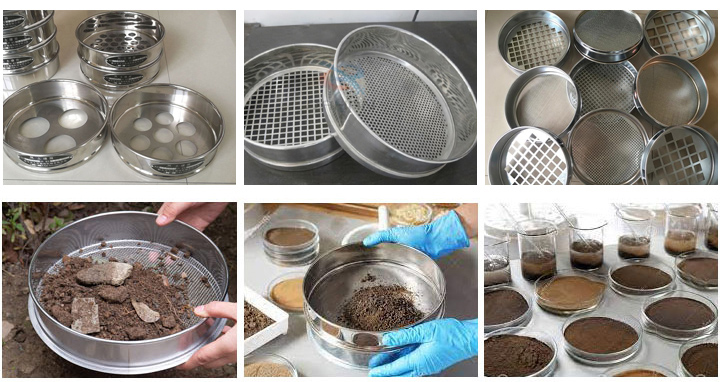
| Soil Project | Standard | Test Sieve Requirements | Calibration Result |
| Moisture | Gravimetric method for determination of soil dry matter and moisture | Aperture 2mm | 2.0mm |
| HJ 613-2011 | |||
| Organic Carbon | Determination of Soil Organic Carbon | Aperture 2mm | 1.93mm |
| Potassium Dichromate Oxidation - Spectrophotometry | Aperture 0.25mm | 0.262mm | |
| HJ 615-2011 | |||
| Chromium | Determination of total chromium in upper soil | Aperture 0.149mm | 0.153mm |
| flame atomic absorption spectrophotometry | |||
| H491-2009 | |||
| Copper | Determination of Soil Quality Copper and Zinc by Flame Atomic Absorption Spectrophotometry | Aperture 2mm | 2.07mm |
| Zinc | GE/T 17138-199T | Aperture 0.149mm | 0.153mm |
| Lead | Determination of the quality of soil and pots Graphite furnace atomic absorption spectrophotometry GB/T 17141-1997 | Aperture 2mm | 2.0mm |
| Determination of lead and cadmium in soil quality KI-MIBK extraction | |||
| Cadmium | Flame Atomic Absorption Spectrophotometry B/T 17141-1997 | Aperture 0.149mm | 0.153mm |
Address:China,Yanjin county forest park gate to the west 1000 meters north road.